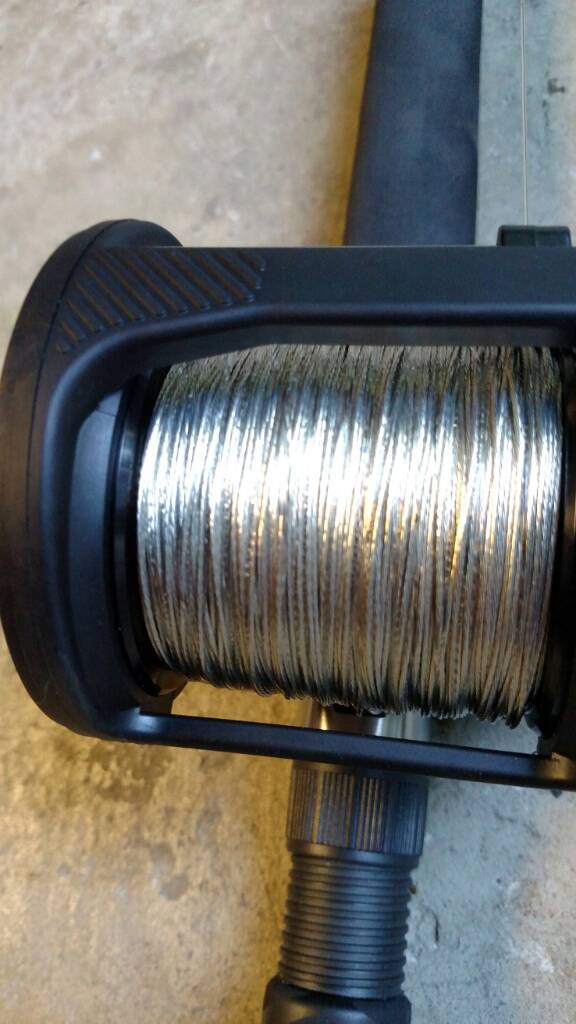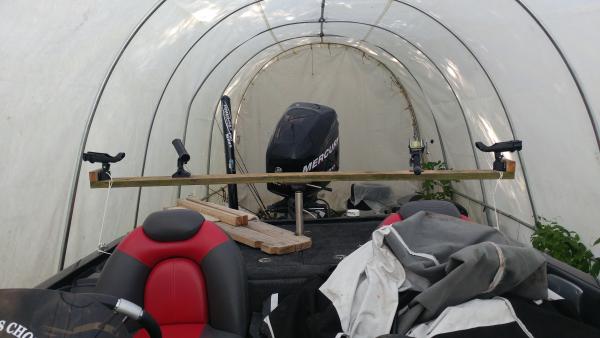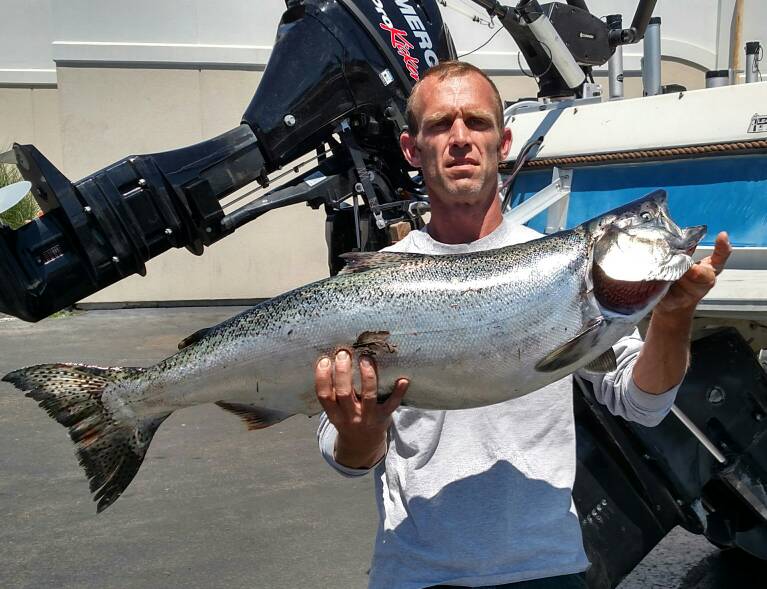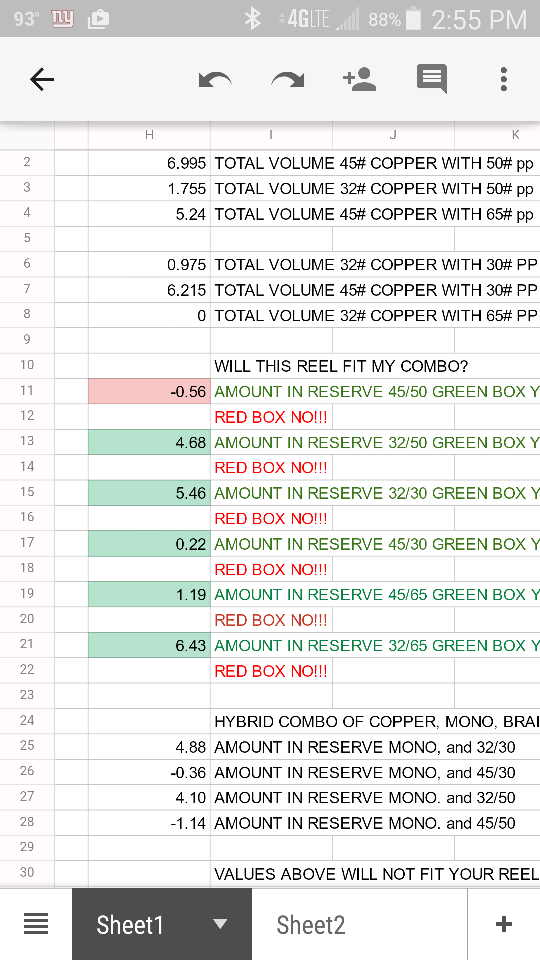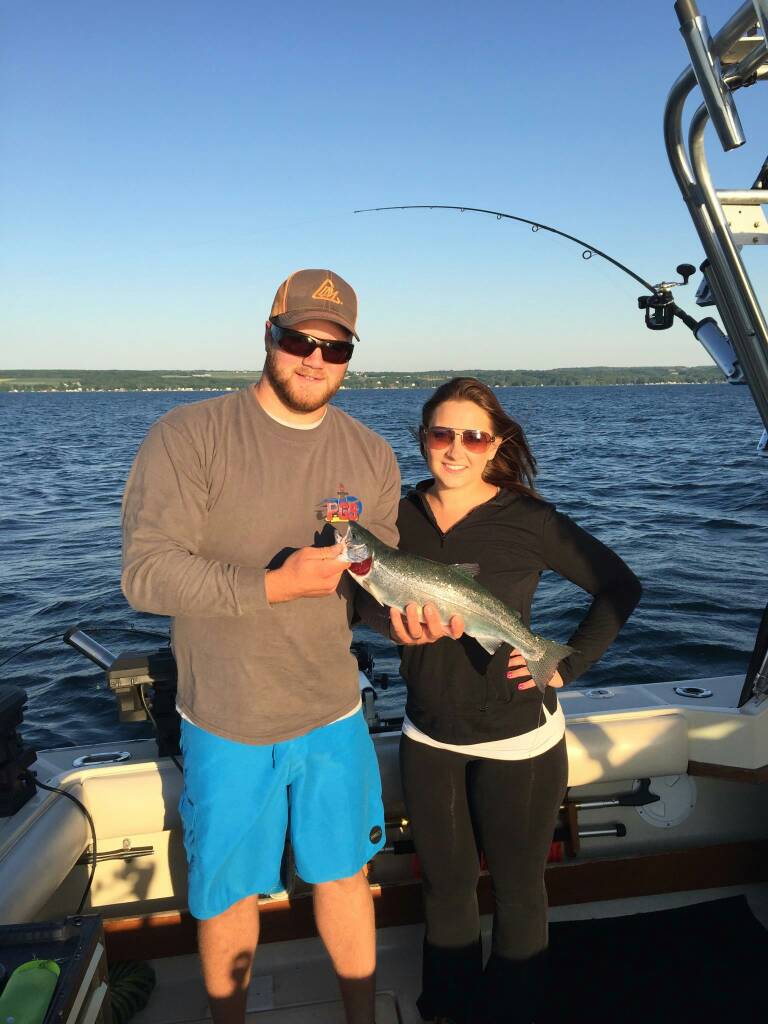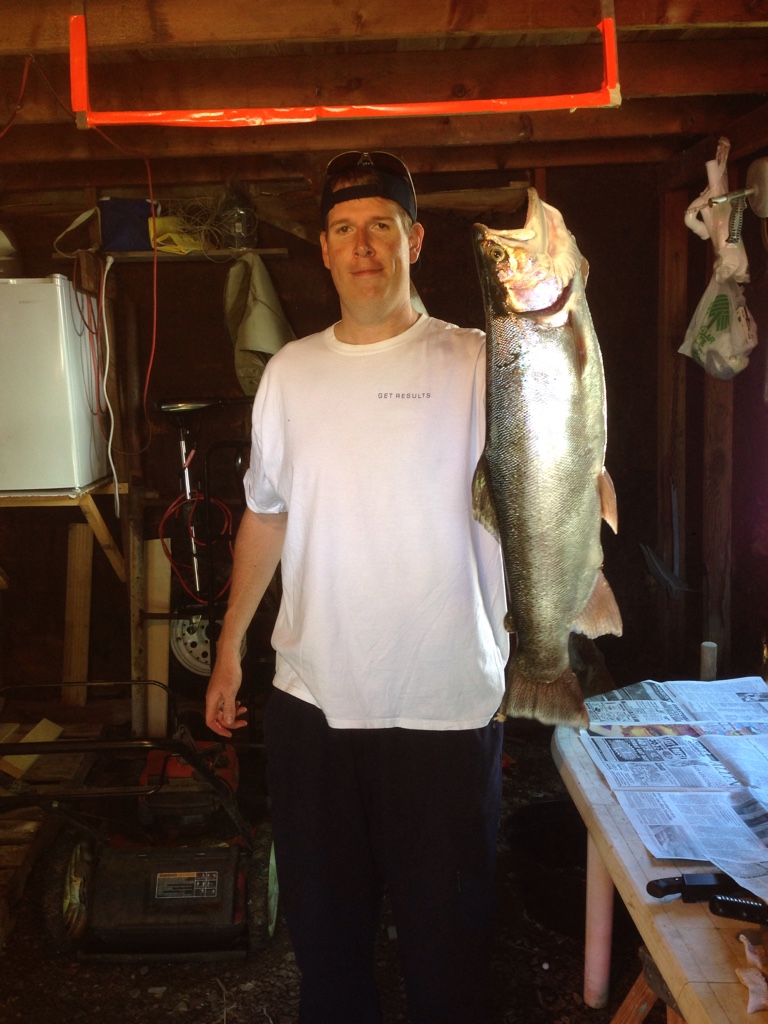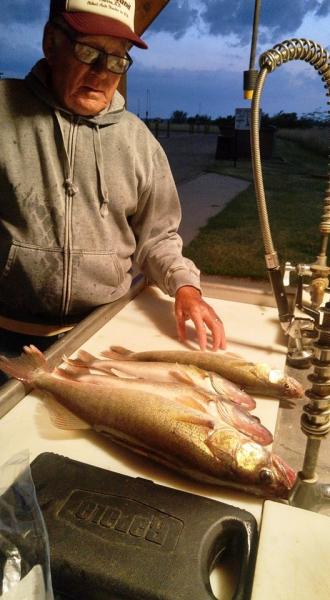-
Posts
13,865 -
Joined
-
Last visited
Everything posted by Sk8man
-
Joe you might want to check out the reel capacity information provided by skipper 19 on here to make your determination and avoid problems. Here is one of the recent discussions. (There were more previously ) http://www.lakeontariounited.com/fishing-hunting/topic/58882-new-reels-for-copper-but-need-some-input/
-
"Is it just a matter of a preset length of lead attached to the mono with the mono in the release?" YES Mr580 is right that you should familiarize yourself with just the standard setup and then mess around with other options. The stuff takes a little getting used to compared with regular mono setups etc. and you need to be very careful deploying it to avoid tangles. I have a few setups that were once 10 colors and now are 5's or 7's if that is any clue
-
-
I only use SS single siwashes for spoons and the Mustad long points on them sharpen quickly and easily with a file actually just a couple strokes done triangularly toward the point and they are scarily sharp
-
Alex said it right that is exactly what I was referring to.....smaller cone angle... should help
-
:lol: Glasswater. I've always wondered about the differences in the signature whether it is the "whipping' motion of the leadcore or even the possible electrical conductance of the copper in water detected by the lateral lines of the fish etc.....very interesting topic on its own....haven't ever seen any actual reported research studies on it.
-
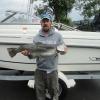
Great day to not work
Sk8man replied to Jeremy Goodison's topic in New York Fishing Reports - Lake Ontario (South Shore)
-

New reels for copper but need some input
Sk8man replied to Chas0218's topic in Tackle and Techniques
Marks (skipper19's) information can be "taken to the bank" and if anyone is puzzling through this stuff I'd go with it as stated. I guess I'm not quite as "patient" (or perhaps competent) tying knots however and I use #8 Spro swivels (50 lb test) for most connections as they go through nearly all eyelets and rod tips fine if using carefully tied or wound (wire) knots. I have also lived on the edge of the cliff with my fluoro leaders as I use 20 lb exclusively on my setups as I fish multiple waters and switch between copper and core rods a lot and don't feel like changing all the time although I also often use 12 lb on the Fingers . The one thing that is critical is the drags on the reels used because if there are any "sticky" spots on them with a big king especially on an initial hit or unexpected run the lighter fluoro can be "unforgiving" and if you try to get away with the cheap stuff is used it usually snaps at the knot or any slight undetected "ding" in the line. Something to keep in mind too is that the actual breaking strength of braid such as Power Pro is usually quite a bit stronger than stated if relatively new and in good condition (just try to break some 10 lb braid with your hands some time) so using 30 lb. should be fine for most applications if worried about space on the reel. Using the standard clinch knot with braid is not recommended by the makers of Power Pro by the way as it can slip at the knot. This can be minimized though by using an extra loop and cinching tightly and carefully if this is your "favorite go to" knot -
The main purpose of leadcore is to get the lure down into the range of the fish as it typically sinks about 5 ft.or so for each 30 ft (most of it different colored at 10 yd intervals) but speed can affect this greatly. There are many ways to run it and depending also on what you are fishing for (e.g. walleyes or trout and salmon etc.). Usually folks have various preferred setups that they feel work best in certain situations trolling (e.g. shorter sections in shallower depths nearer shore or up toward the surface out deep ( e..g. for steelhead etc.) Common setups are 3, 5, 7, and 10 colors but fishermen have all sorts of favorite lengths or backing combinations or weights to be attached to get them deeper). Leadcore can be run form boards but it can be important at what length and what particular board as leadcore has a lot of "drag" or resistance in the water. For example you wouldn't want to run a 10 color off the old small yellowbirds because the drag would sink them but that same setup could be run from big boards or perhaps large inlines like the Church TX44's. There is even a version I run sometimes off a downrigger that is either 1 or 2 colors called a secret weapon rig. It is very powerful sometimes and seldom mentioned perhaps on purpose Leadcore at longer lengths is often run straight back without boards or down the "Chute" (middle area at the back of the boat). A lot depends on what else you are running as say a 10 color can get into other stuff like coppers and it is a real mess to deal with when it happens but it is highly effective especially at certain times of the year when the fish are in the higher areas of the thermocline for example. Usually (but not always) single spoons or sticks are run from it. It is important to have a good amount of backing on the reel used typically braid such as Power Pro and this become quite critical when used on boards. You run the entire preferred section of leadcore out usually and attach the release on the boards to the backing. Some folks use a short section (s) of mono for this function spliced into the leadcore or braid backing. On the inline boards if using braid backing you'll want to replace the plastic pins at the back and possibly tighten down the jaws of the front release or wrap the braid around it a couple times to prevent "slippage wear"
-
It is a pretty general question but although most of us are heavily into trolling for trout and salmon and sometimes for other species as well we sometimes tend to forget that natural bait live or dead is probably the most potent lure to be used regardless of species. I started out boat fishing by still fishing for trout and if you were to check on the results of many fishing derbies for numerous species over the years natural bait has caught many winners. Water conditions and wind speed and direction are even more critical however for doing it than trolling. I have never had any success with an east wind and drift fishing is limited to low wind and from the right direction so you have a long path to do it without hitting a shoreline. Anchoring up you need to locate usually near fish or schools of bait with fish nearby via your fish finder. In the old days it was done blindly based on suspected depths and with depth markings on the anchor rope.....creating Popeye arms on the anchor guy The Finger Lakes are still fished by quite a few folks using natural bait for trout and landlocks (mainly sawbellies fished on or near bottom either with slip sinkers or with slip bobber setups suspending the bait. These methods aren't used as frequently in the trollers domain of Lake O but they could work there as well if you know what you are doing especially with todays caliber of gear. If it was a matter of "survival" fishing it is what I would be doing to catch something to eat as it is much more conservative of gas and often time as well and requires little gear. Many of my fellow trollers have a disdain for it (some consider it boring or else an unfair advantage) but I think it is hard to argue that it doesn't work. If fishing for trout and salmon the commonly used baits are sawbellies (alewives), smelt (mainly Spring), Golden shiners, Emeralds etc. depending on water fished. Egg sacks have also been used successfully from piers and shore both on Ontario and the Fingers pointing up an additional fact that LIVE bait isn't essential always but the closer it is to natural and within the dietary range of the species it will work best. Salmon are not normally considered "bottom feeders" but lakers and brown trout feeders will pick up dead bait either suspended or laying on the bottom and especially the larger fish.
-
-
Man... does that suck or what? but it was slow for us after the eyes on Honeoye too the other day. We went 8 hrs. with harnesses and sticks etc. and not one Walleye....couple largemouths and a big gill and that was it so even without the gobies it can be tough fishing for them
-
-
Glasswater gave you some good suggestions for rod setup etc. One of the things that strikes me is that in order to get down 100-125 ft with dipseys you do have to let out a bunch of line but you also have to have the right dipsey and I'm not sure which ones you were using. I use the heavier and larger 124 mm Deeper Diver (now under different name?) which will get me down that deep and even deeper (e.g. 151 ft. with 350ft of wire out) but not at those speeds. If you are trolling a diver at 2.6- 2.9 even the bigger divers will lift up out of the expected range and most of the time if running a spinney or flasher fly combo you won't want them running that fast anyway and spoons behind flashers would have to be carefully selected to run right too. I know 30# Power Pro cuts through the water well but an additional factor is that with standard sized dipseys there is a point that is reached where they will not go much or any deeper no matter how much line is let out they just trail further behind the boat. Reduced speed is necessary to get them down further and depending on the circumstance and setup that may not always be productive either.
-
It may help to lessen the sensitivity and see what that does. Also you mentioned the weight being different and heavier is it a different shape? If so it could be that because the weight is larger in length, circumference or now positioned directly below the transducer it is more prominent on the screen again adjust the sensitivity downward in small increments and see how things look . I'm not sure whether you have the standard transducer and are running at 200 KHZ or 83KHZ or a single bandwidth type (50khz) and that can make a difference in how it picks up your weight. After trying the sensitivity setting adjustments try changing to the other transducer bandwidth.
-

Fish Finder doesn't read bottom accurately anymore - Help?
Sk8man replied to PCPete's topic in This Old Boat
It sounds like the transducer for sure if it did the same thing with both units. When they become damaged there usually is no visible sign of it.They can be damaged by something hitting them coming on the trailer wrong and hitting metal, hitting solid objects in the water, or perhaps a stone hitting them while trailering down the road etc.. My hunch is a new transducer will solve it. -
-
Welcome Stillwater Best of luck out there this season.
-

Charting fish on the surface over 200fow
Sk8man replied to mikebarb86's topic in Open Lake Discussion
I'm assuming you are referring to lake Ontario. I know we are pretty obsessed with trout and salmon but keep in mind many other species inhabit the lake. I have witnessed carp migrations on Seneca Lake for example while fishing in over 500 ft of water and hundreds of them were crossing the lake a few feet down and even went right under my boat. In Lake O there are numerous warm water species of fish and they don't all stay in the shallows while looking for food.. Steelies will often peruse to upper layer feeding on small insects and other bait out over the depths near the surface and although you may encounter an occasional brown suspended out over deep water they usually inhabit areas where shallow water has closer to shore drop offs and they are usually more bottom oriented especially as the sun comes up brightly at this time of year. In the Spring and also in the very early morning hours they can be found near shore in the shallows as they feed in there at night in summer. For steelies troll fairly fast 2.5-3.2 and run your lines back aways and also run some orange, pink, green or plain silver/brass sided or copper undersided spoons up high on downriggers as well as off the boards. Sometimes steelies will come right into the prop wash for spoons (e.g. on sliders). Browns also follow scum lines and thermal breaks all over the place and are often caught weaving in and out of them trolling out aways. -

Owasco derby this weekend
Sk8man replied to Great Lakes Lure Maker's topic in Finger Lakes Discussion
-

Iron Duke Trolling Flies
Sk8man replied to Iron Duke's topic in Classifieds - Buy, Sell, Trade or Rent
Great looking flies and nice job on the website Mike. Those flies and your business are sure to endure for a long time. It should be obvious to folks and prospective customers that your flies as well as you are the "real deal" and the result of experienced fishing. Best of luck but with quality like that you won't need it -
-

Unicorn?
Sk8man replied to work2fish's topic in Ontario, CA Fishing Reports - Lake Ontario (North Shore)
Nice male Atlantic. I sure hope those guys take hold out there at some point in numbers they are a lot of fun because even though they don't have wings they spend a lot of time in the air -
Best of luck to you in both retirement and fishing


